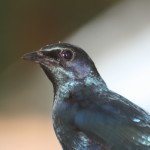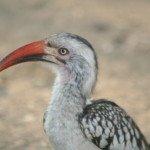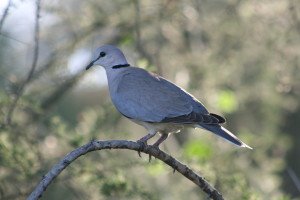Pilanesberg National Park 0
![IMG_1541[1]](http://kenborland.com/wp-content/uploads/2016/01/IMG_15411-300x200.jpg)
Pilanesberg National Park has open grasslands and plenty of soothing aquatic habitats, but, driving around the fourth largest conserved area in South Africa, one cannot help but notice the violent, almost cataclysmic events that shaped the spectacular scenery.
Pilanesberg is centred on the crater of an extinct volcano with its mountains being a series of concentric rings of igneous rock i.e. solidified lava. The forces of erosion, operating on cracks and faults, have then created a broad valley running from the south-west of the park to the north-east.
The fascinating geology of Pilanesberg gives rise to diverse vegetation, which in turn produces great birding.
Although much of the park comprises broadleaved woodland and open grassland, which contains fewer birds, there are areas of thornveld and its rich insect life, as well as some of the special birds that call Acacias home.
These thornveld endemics can be tricky to spot, but the Manyane campsite is set in a stand of typical Kalahari Thornveld, dominated by stately Acacias.
So walking around the campsite always provides plenty of birds at close quarters and on this occasion, the highlight was a Burntnecked Eremomela which hung around for a long time in a thorn tree close to our site.
Crested and Swainson’s Francolin, Redbilled Hornbill, Yellowfronted Canary, Goldenbreasted Bunting, Redwinged Starling and Whitebrowed Scrub Robin were also friendly neighbours, along with a Blackbacked Puffback and a Brubru amongst a host of species in a bird party in the tree above our camp.
Arrowmarked Babblers would move determinedly through the camp, grabbing breakfast tidbits, while a business of Banded Mongoose would also come foraging through camp, making their delightful purring noises. Longtailed Shrike was a visitor to the Acacia trees as well, which often also held colourful Southern Tree Agama. Chacma Baboons were less welcome intruders.
The Tlou Drive, pretty much in the centre of the park, goes through classic Acacia thickets in areas of open grassland, both short and long. In other words great bushveld country and ideal habitat for the beautiful Violeteared Waxbill.
Being August, the bush was dry and brown, so a Violeteared Waxbill with its dazzling mixture of blue, violet and red offset against chestnut, really stands out when the bird is strolling around on the ground on an exposed culvert.
In the same area, a Crimsonbreasted Shrike and a Pied Barbet were also hanging around, so there was a sudden, startling burst of colour amongst the otherwise drab winter tones of the Tlou Drive.
A Steenbok was hiding in a little grove of trees and African Elephant were also around.
The Mankwe Dam is the largest water body in Pilanesberg and an ideal place to spot the mammals and birds that are attracted to the water. There were lots of Blue Wildebeest and Giraffe (including, unfortunately, a deceased one) on this occasion, as well as Nile Crocodile.
The Hippo Loop is one of the better roads from which to explore Mankwe Dam, allowing one to get very close to the north-western shore.
There, where the last of the previous summer’s water was draining away, leaving soft mud perfect for waders in its retreat, were some strange long-billed birds.
Heavily marked with brown, black and buff, there were four of them probing deeply and rhythmically into the mud. It took a while to identify them because the only African Snipe I had seen previously were single birds either flying over a wetland, doing their characteristic drumming display, or crouching in thick vegetation.
But apparently they are known for coming out and foraging in the open when water levels recede, exposing the soft mud that contains the worms that are their favourite prey.
A Tawny Eagle and a few Greater Striped Swallow were flying about, while a Chinspot Batis was investigating the bushes.
The other water birds present were Great White Egret, Yellowbilled Duck, Reed Cormorant, Egyptian Goose and African Fish Eagle.
Tlodi Dam is a much smaller water body close to Manyane Camp and Pearlbreasted Swallow is often seen here collecting mud from the water’s edge for its nest.
There are usually Hippopotamus in the dam as well and plenty of Southern Masked Weaver starting to get into breeding plumage.
Heading north from Manyane will bring you to the Malatse Dam, which has an excellent hide that allows you to get close to the action. With the hide facing east, it’s a good place to spend the late afternoon, only about 9km from camp, and the sort of place to spot exciting stuff.
African Spoonbill, African Darter and Dabchick were out on the water, while a Threebanded Plover was dashing about and a Natal Francolin was right below the hide window.
The Tshwene Drive links Manyane camp with the centre of the park and Mankwe Dam, and goes through often tall grassland with thorny and bushy thickets.
This is ideal country for the Browncrowned Tchagra and sure enough one landed on top of a bush, vigorously wagged its tail and then dived into a thicket as we possibly disturbed an imminent flight display.
The area also produced Blackchested Prinia, Marico Flycatcher and Lilacbreasted Roller.Ntshwe Drive is one of the gateways to the western portion of the park and is rather scenic with trees and koppies.
White Rhinoceros, accompanied by Redbilled Oxpecker, were present as was a solitary Redeyed Bulbul, which was much more secretive than its common cousin, the Blackeyed. Kalahari Robin was also present but inconspicuous.
The Tshepe Drive also heads towards Mankwe Dam, approaching from the south-east of the park and is well-vegetated and full of game. Having spotted Tsessebe and Springbok, we came across a beautiful Lioness and then, shortly after she sauntered towards the road, a nine-strong pride of youthful, virile-looking males followed her.
Sightings list
Helmeted Guineafowl
Crested Francolin
Redbilled Hornbill
Arrowmarked Babbler
Forktailed Drongo
Common Myna
Longtailed Shrike
Longbilled Crombec
Swainson’s Francolin
Whitebrowed Scrub Robin
Burntnecked Eremomela
Impala
Pied Crow
Vervet Monkey
Cape Turtle Dove
Redfaced Mousebird
Warthog
Southern Yellowbilled Hornbill
Southern Masked Weaver
Blackshouldered Kite
Greater Kudu
Marico Flycatcher
Browncrowned Tchagra
Grey Lourie
Blue Wildebeest
Blackeyed Bulbul
Giraffe
Chinspot Batis
White Rhinoceros
Redbilled Oxpecker
Redeyed Bulbul
Kalahari Robin
Crimsonbreasted Shrike
Sabota Lark
Southern Boubou
Slender Mongoose
Pied Barbet
Chestnutvented Tit Babbler
Fiscal Flycatcher
Violeteared Waxbill
African Elephant
Speckled Mousebird
Steenbok
Groundscraper Thrush
Glossy Starling
Blackchested Prinia
Rock Pigeon
Blackbacked Puffback
Brubru
Pearlbreasted Swallow
Hippopotamus
Blacksmith Plover
Blue Waxbill
Tsessebe
Lion
Springbok
Crested Barbet
Whitebreasted Cormorant
Grey Heron
Greater Striped Swallow
Tawny Eagle
Laughing Dove
Banded Mongoose
Yellowfronted Canary
Chacma Baboon
African Spoonbill
African Darter
Dabchick
Natal Francolin
Threebanded Plover
Familiar Chat
Kurrichane Thrush
Neddicky
Grey Hornbill
Lilacbreasted Roller
Nile Crocodile
Great White Egret
Yellowbilled Duck
Reed Cormorant
Serrated Hinged Terrapin
Egyptian Goose
African Snipe
African Fish Eagle
Goldenbreasted Bunting
Southern Tree Agama
Redwinged Starling
![IMG_1538[1]](http://kenborland.com/wp-content/uploads/2016/01/IMG_15381-300x200.jpg)
![IMG_1533[1]](http://kenborland.com/wp-content/uploads/2016/01/IMG_15331-300x200.jpg)
![IMG_1540[1]](http://kenborland.com/wp-content/uploads/2016/01/IMG_15401-300x200.jpg)
![IMG_1545[1]](http://kenborland.com/wp-content/uploads/2016/01/IMG_15451-e1667319814711-200x300.jpg)




